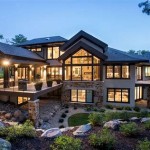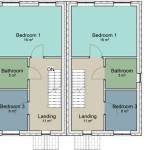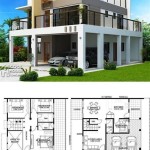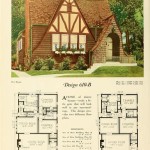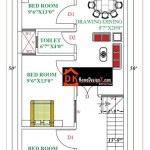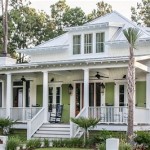House plans for small modern homes are detailed blueprints that provide a comprehensive guide for constructing compact and up-to-date residences. These plans encompass every aspect of the home’s structure, from the foundation and framing to the electrical and plumbing systems.
Small modern homes, often referred to as tiny houses or micro-apartments, prioritize functionality and space optimization. Their streamlined designs and innovative layouts maximize living space while minimizing environmental impact and construction costs. A prime example is the “Casa Tiny” model, a 200-square-foot home that incorporates a sleeping loft, kitchen, bathroom, and living area into a compact and efficiently designed space.
In the following sections, we will explore various house plans for small modern homes, discussing their unique features, benefits, and the considerations involved in choosing the right plan for your needs.
When selecting house plans for small modern homes, consider these key points:
- Maximize natural light
- Incorporate multi-purpose spaces
- Prioritize energy efficiency
- Choose sustainable materials
- Utilize vertical space
- Consider a modular design
- Plan for outdoor living
- Consider future expansion
- Stay within budget
By carefully considering these aspects, you can create a small modern home that meets your specific needs and lifestyle.
Maximize natural light
Incorporating ample natural light into small modern homes is crucial for creating a living space and reducing energy consumption. Here are a few strategies to maximize natural light:
Large windows and skylights: Installing large windows on multiple walls allows natural light to flood the home from various angles. Skylights are another excellent way to bring in overhead light, especially in areas with limited wall space.
Open floor plans: Open floor plans eliminate unnecessary walls and partitions, allowing light to flow freely throughout the home. This creates a more spacious and airy feel.
Light-colored walls and finishes: Light-colored walls and finishes reflect more light, making the space appear brighter. Avoid dark colors and heavy drapes that can block natural light.
Mirrors: Strategically placed mirrors can bounce light around the room, amplifying its effect. Consider placing mirrors opposite windows or in areas with limited natural light.
Incorporate multi-purpose spaces
Multi-purpose spaces are essential for maximizing functionality in small modern homes. Here’s how to incorporate them effectively:
Define zones: Divide the home into distinct zones for different activities, such as sleeping, cooking, dining, and working. Use furniture, screens, or partitions to create visual separation without closing off the space.
Choose convertible furniture: Invest in furniture pieces that serve multiple purposes. A sofa bed can provide both seating and sleeping space, while a coffee table with built-in storage can double as a work surface.
Maximize vertical space: Utilize vertical space by installing shelves, cabinets, and loft beds. This frees up floor space for other activities and creates the illusion of a larger area.
Consider built-ins: Built-in features, such as window seats with storage or Murphy beds, maximize space utilization and provide additional functionality without cluttering the home.
By incorporating multi-purpose spaces into your small modern home, you can create a flexible and functional living environment that meets your evolving needs.
Prioritize energy efficiency
In today’s environmentally conscious world, prioritizing energy efficiency in house plans for small modern homes is paramount. By incorporating sustainable practices and energy-saving features, you can create a home that minimizes its environmental impact and reduces your utility bills.
Insulation and air sealing: Proper insulation and air sealing are crucial for preventing heat loss and air infiltration. Use high-quality insulation materials in the walls, roof, and foundation, and seal all gaps and cracks around windows, doors, and pipes.
Energy-efficient appliances and lighting: Choose appliances and lighting fixtures that are Energy Star certified. These products meet strict energy efficiency standards, reducing your energy consumption and saving you money in the long run.
Renewable energy sources: Consider incorporating renewable energy sources into your home, such as solar panels or a geothermal heat pump. These systems can generate electricity or heat from renewable resources, reducing your reliance on fossil fuels and your carbon footprint.
By prioritizing energy efficiency in your small modern home, you can create a comfortable and sustainable living space that aligns with your values and contributes to a greener future.
Choose sustainable materials
Selecting sustainable materials for your small modern home not only reduces its environmental impact but also contributes to a healthier indoor environment and potentially lower maintenance costs.
- Recycled and reclaimed materials: Using recycled and reclaimed materials, such as reclaimed wood or recycled metal, diverts waste from landfills and conserves natural resources.
- Low-VOC (volatile organic compound) materials: Opt for low-VOC paints, finishes, and adhesives to reduce indoor air pollution and create a healthier living space.
- Sustainable wood products: Choose wood products that are certified by organizations like the Forest Stewardship Council (FSC) or the Programme for the Endorsement of Forest Certification (PEFC). These certifications ensure that the wood is sourced from sustainably managed forests.
- Natural and renewable materials: Incorporate natural and renewable materials like bamboo, cork, and wool into your home. These materials are biodegradable and have a lower environmental impact compared to synthetic materials.
By choosing sustainable materials for your small modern home, you can create a space that is both eco-friendly and comfortable, contributing to a more sustainable future.
Utilize vertical space
In small modern homes, maximizing vertical space is key to creating a functional and comfortable living environment. Here are a few ways to effectively utilize vertical space:
- Loft beds: Loft beds are a great way to save floor space while creating a cozy sleeping area. They can be built into closets, over storage units, or even in the living room.
- Vertical storage: Utilize vertical space for storage by installing shelves, cabinets, and drawers along walls. Stackable bins and baskets can also help maximize vertical space in closets and pantries.
- Built-in bookshelves: Built-in bookshelves can be designed to reach from floor to ceiling, providing ample storage for books, dcor, and other items. They can also be used to create room dividers or define different zones within the home.
- Vertical gardens: Vertical gardens are a great way to add greenery to small spaces and utilize vertical walls. They can be created using hanging planters, wall-mounted trellises, or even repurposed pallets.
By utilizing vertical space effectively, you can create a small modern home that feels spacious, organized, and inviting.
Consider a modular design
A modular design approach involves constructing a home from prefabricated modules or units that are built off-site in a controlled factory setting and then assembled on the building site. This method offers several advantages for small modern homes:
- Speed and efficiency: Modular homes can be built much faster than traditional site-built homes, as the modules are constructed in parallel at the factory while the foundation is being prepared on-site. This reduces construction time and allows you to move into your new home sooner.
- Cost-effectiveness: Modular construction can be more cost-effective than traditional building methods due to the economies of scale achieved by building multiple modules in a factory setting. The controlled environment also reduces waste and minimizes labor costs.
- Flexibility and customization: Modular homes offer a high degree of flexibility and customization. You can choose from a range of pre-designed modules or work with an architect to create a custom design that meets your specific needs and preferences.
- Quality control: Modules are built in a controlled factory setting, which allows for strict quality control and adherence to building codes. This ensures a high level of consistency and quality in the finished product.
Overall, a modular design approach can be an excellent option for those seeking a fast, cost-effective, and flexible way to build a small modern home.
Additional benefits of modular construction for small modern homes:
- Sustainability: Modular construction often involves the use of sustainable materials and building practices, reducing environmental impact.
- Durability: Modules are built to withstand transportation and installation, ensuring durability and longevity.
- Reduced on-site disruption: Since most of the construction occurs off-site, modular construction minimizes disruption to your daily life and the surrounding environment.
Plan for outdoor living
Extending your living space outdoors is crucial for maximizing functionality and enjoyment in small modern homes. Here are important considerations for planning an outdoor living area:
Create a seamless connection: Design your outdoor living area to flow seamlessly from the interior of your home. Use large windows or sliding doors to connect the indoor and outdoor spaces, creating a cohesive and inviting environment.
Define different zones: Divide your outdoor living area into distinct zones for different activities, such as dining, lounging, and gardening. Use furniture, rugs, and plants to create visual separation and define each zone’s purpose.
Maximize privacy: Consider privacy when planning your outdoor living area, especially if your home is close to neighbors or in a public area. Use fences, hedges, or privacy screens to create a sense of seclusion and tranquility.
Incorporate natural elements: Bring nature into your outdoor living area by incorporating natural elements such as plants, water features, and natural materials like wood or stone. These elements create a relaxing and rejuvenating atmosphere.
Consider year-round use: If you live in a climate with varying seasons, consider designing your outdoor living area for year-round use. Add elements like a fire pit or outdoor heater for warmth during colder months, and incorporate shade structures or pergolas for protection from the sun during warmer months.
Consider future expansion
When creating house plans for small modern homes, it’s wise to consider the potential for future expansion. You may not need extra space right now, but planning ahead can save you time, money, and hassle in the long run.
Design with flexibility in mind: Choose a home design that allows for easy expansion in the future. This could involve designing a home with a modular structure, where additional modules can be added as needed. Alternatively, you could design a home with unfinished spaces, such as a basement or attic, that can be converted into living space later on.
Consider your future needs: Think about how your space needs may change in the future. Are you planning to have children? Do you anticipate working from home? Consider these factors when designing your home, and make sure the layout can accommodate your potential future needs.
Plan for utility expansion: When considering future expansion, it’s important to plan for the expansion of utilities as well. This includes electrical, plumbing, and HVAC systems. Make sure the home’s infrastructure can support future additions without major renovations.
Benefits of considering future expansion:
- Increased home value: A home with expansion potential is often more valuable than a home without it. This is because potential buyers see the potential for growth and increased living space.
- Reduced future costs: Planning for future expansion now can save you money in the long run. By designing your home with expansion in mind, you can avoid costly renovations or additions later on.
- Peace of mind: Knowing that your home can accommodate your future needs can provide peace of mind and reduce the stress of unexpected life changes.
Stay within budget
One of the most important considerations when building a small modern home is staying within your budget. Here are a few tips to help you do just that:
- Set a realistic budget: Before you start planning your home, it’s important to set a realistic budget. This includes not only the cost of construction but also the cost of land, permits, and other fees. Be sure to factor in a contingency fund for unexpected expenses.
- Choose a simple design: Complex designs and intricate details can add significantly to the cost of construction. By choosing a simple design, you can save money without sacrificing style.
- Use affordable materials: There are many affordable materials available that can be used to build a small modern home. Consider using recycled materials, repurposed items, or materials that are locally sourced. These materials can help you save money while still achieving the look you want.
- Do some of the work yourself: If you’re handy, you can save money by doing some of the work on your home yourself. This could include tasks such as painting, installing flooring, or landscaping. However, be sure to only take on tasks that you’re comfortable with and that you have the time to complete.
By following these tips, you can build a small modern home that meets your needs and fits your budget.










Related Posts

